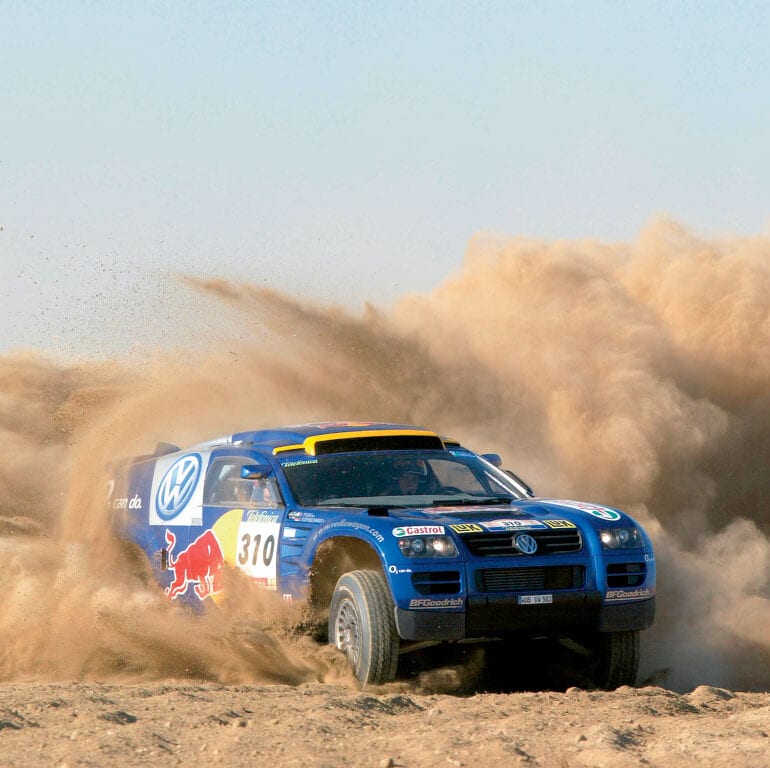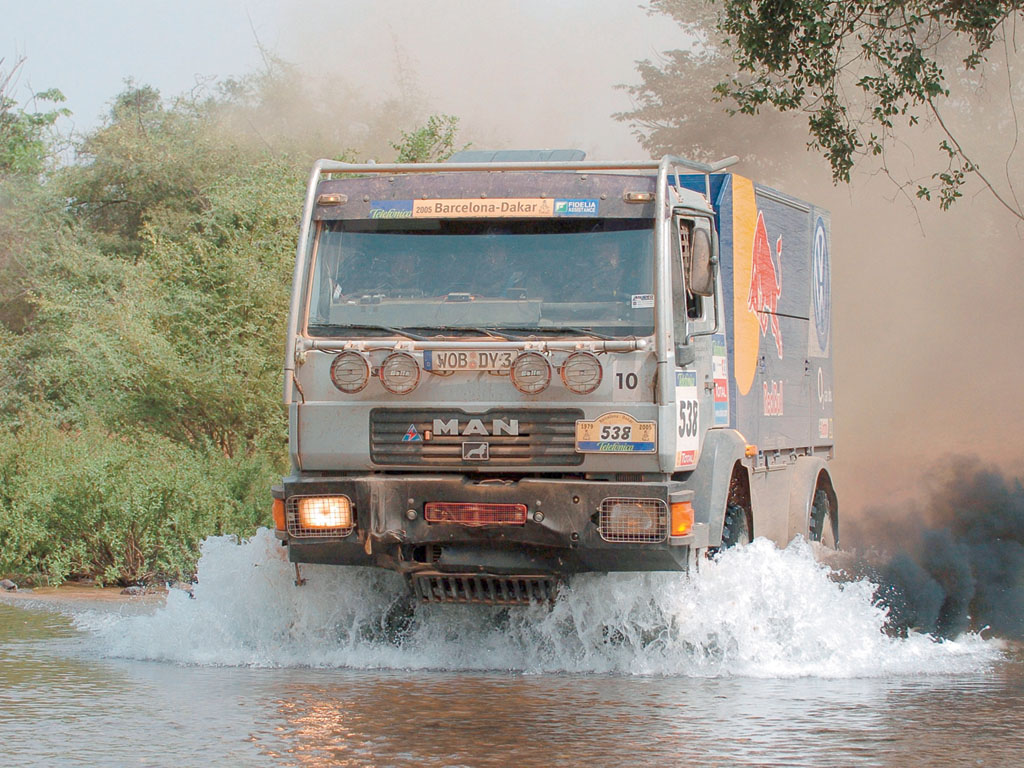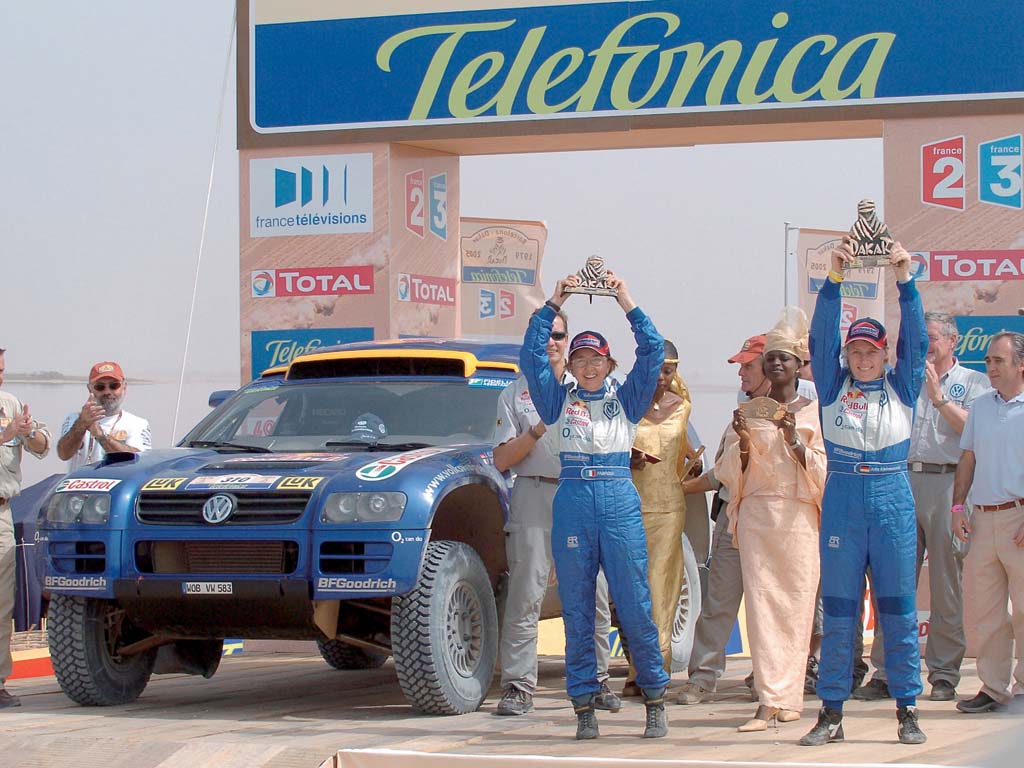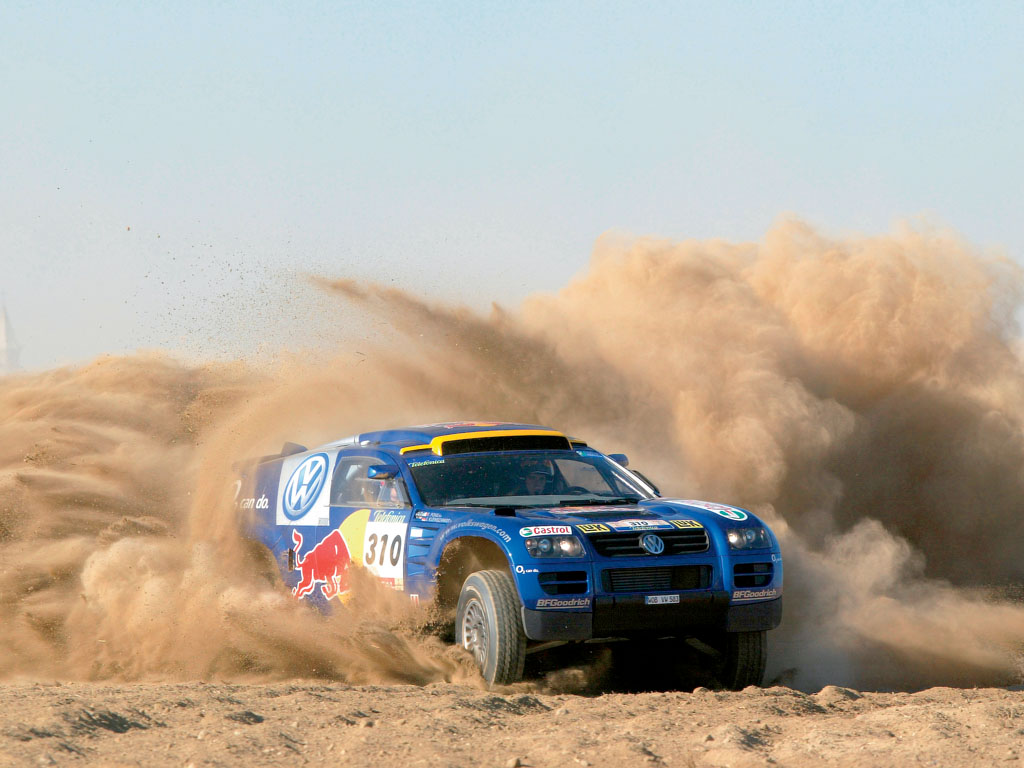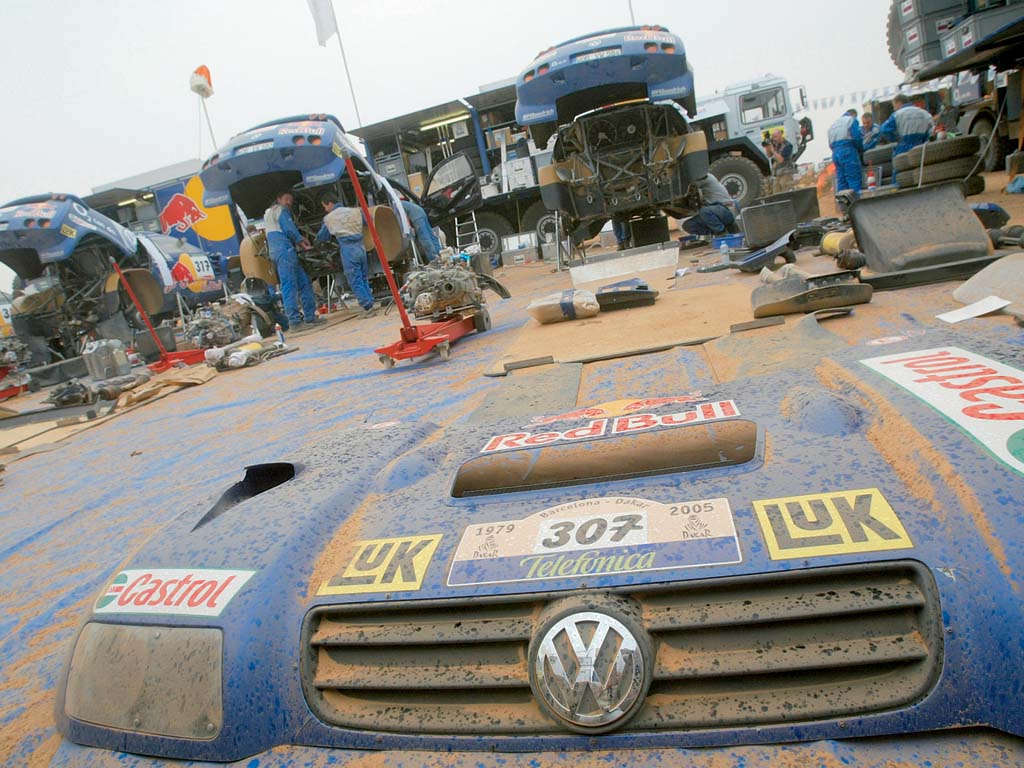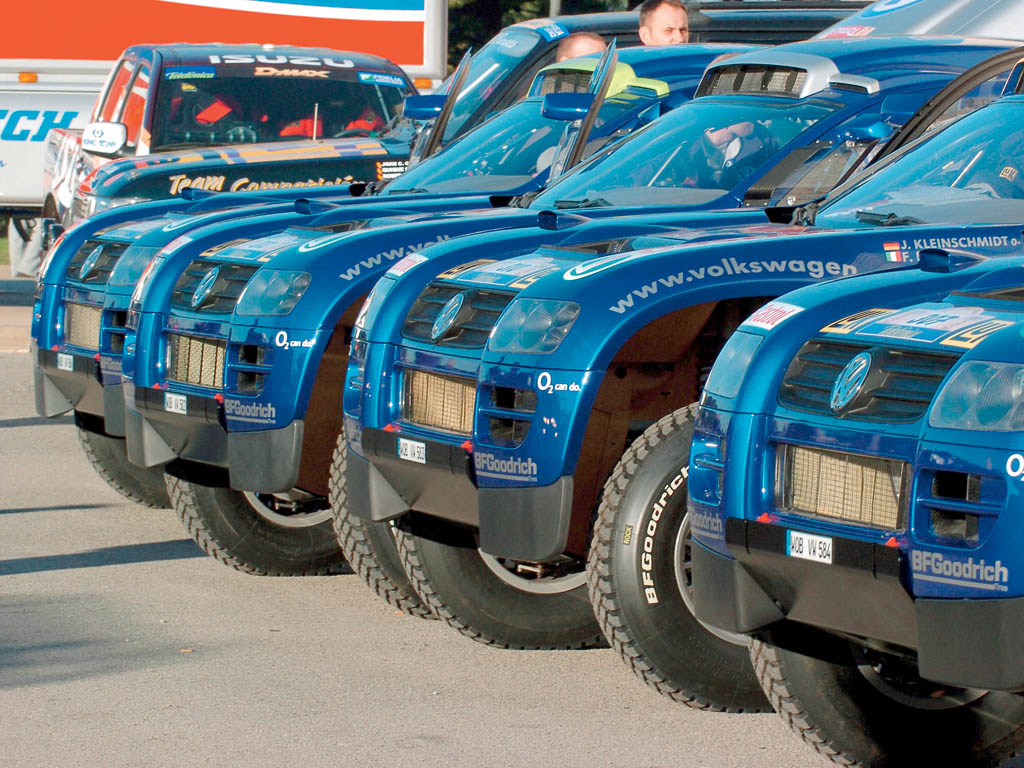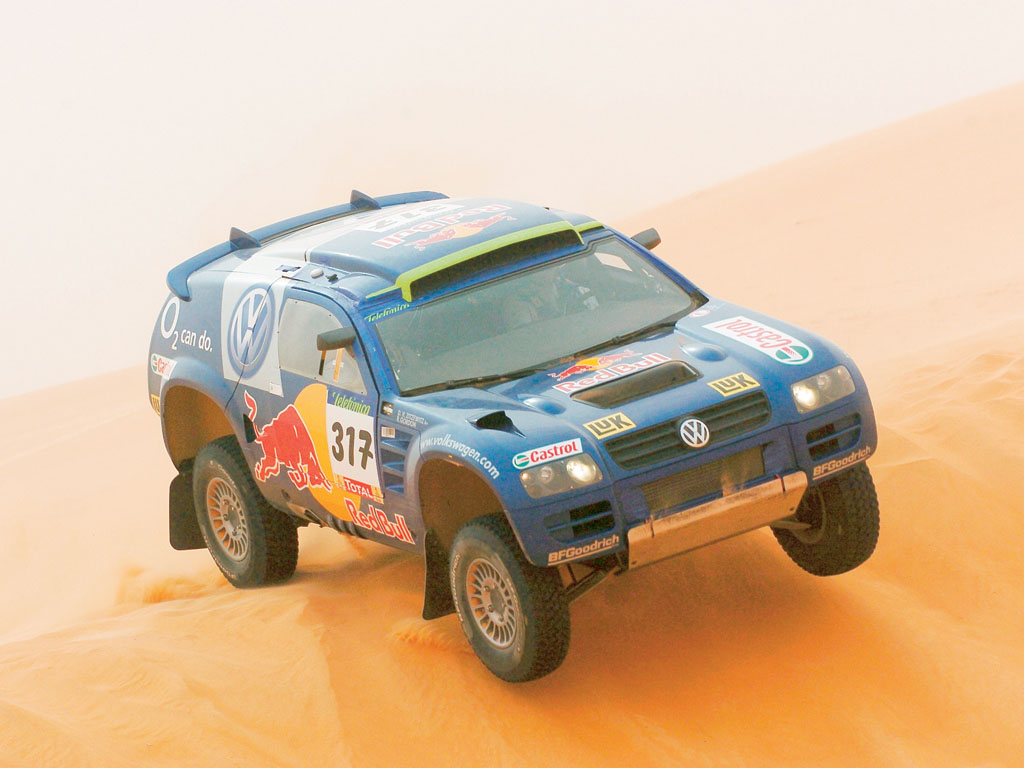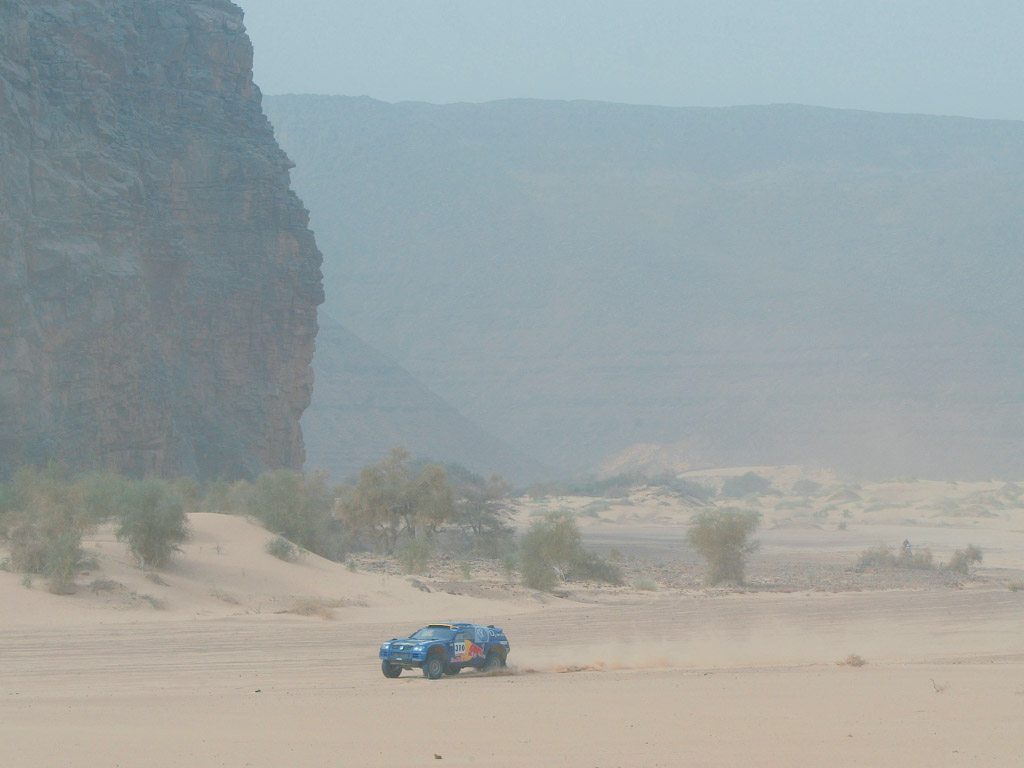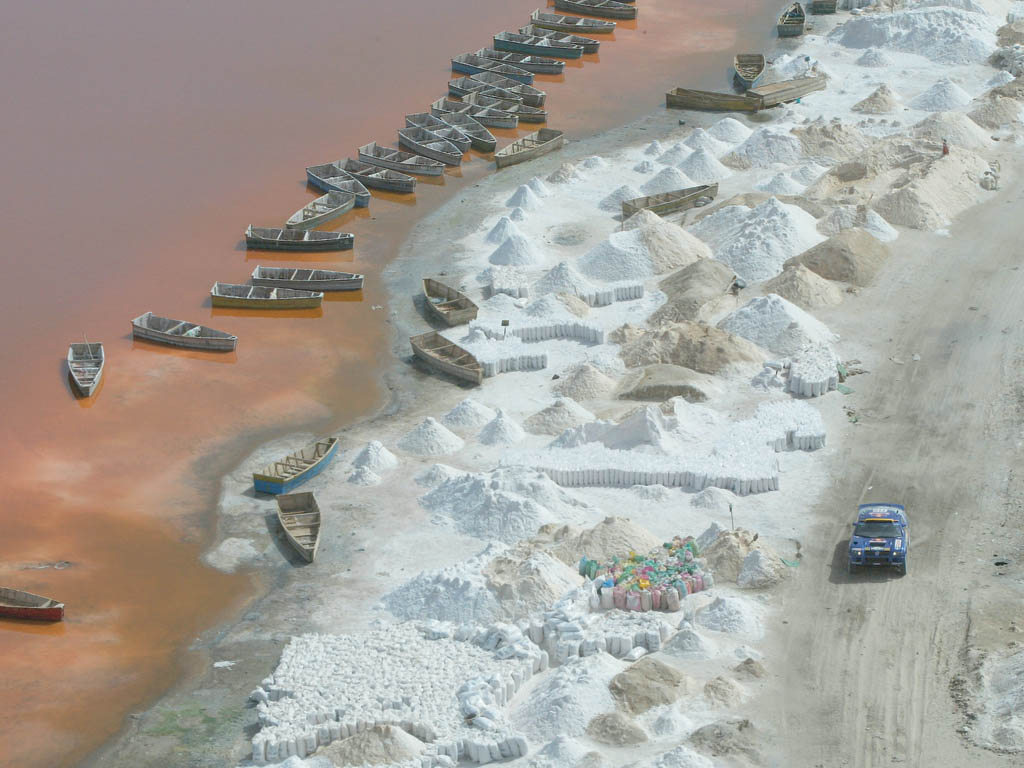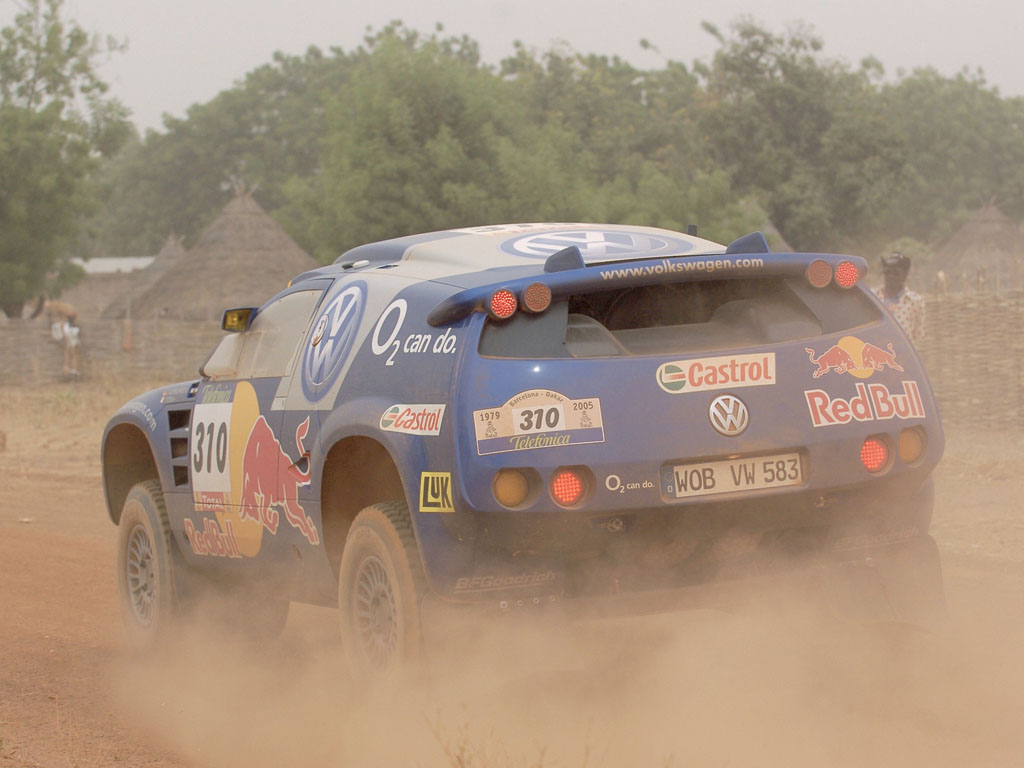2005 Volkswagen Race-Touareg
Wolfsburg, 16. January 2005 – Almost a quarter of a century to the day, Volkswagen again writes Dakar Rally history: In 1980, Volkswagen was the first German manufacturer to win the Dakar Rally. Twenty five years later with the Race-Touareg, the German-Italian duo Jutta Kleinschmidt/Fabrizia Pons gave a diesel powered vehicle its first ever podium finish in the worldâs hardest desert rally by taking third position.
The 27th Dakar Rally started on New Year’s Day 2005 from Barcelona and Volkswagen’s Marathon Rally Team was there with a second competitive outing for the Race-Touareg . The latest version of their rally vehicle was presented to the public for the first time at the Paris Motor Show. The Dakar Rally, with its 16 special stages covering 5,431 kilometres and 8,956 kilometres in total, represents one of the greatest challenges in motorsport
Volkwagen’s logistic department was been systematically expanded, after doubling the number of competing vehicles in the 2004 Dakar Rally from two to four Race-Touareg prototypes for 2005. Volkswagen lined up with a team of over 60 people, including management personnel and drivers, for the long 9,000 kilometre trip to Dakar. As direct support for the works drivers, two Race-Trucks are entered in the truck classification, which are allowed to provide immediate help in the stages.
Volkswagen constantly developed the Race-Touareg after the successful debut with Bruno Saby’s sixth place and Jutta Kleinschmidt’s stage victory at the 2004 Rally Dakar. The most important innovation concerns the TDI-engine: The cubic capacity of the five-cylinder in-line engine mounted longitudinally behind the front axle was increased from 2.3 to 2.5 litres. As a result, the power produced by the turbo-diesel unit increases from 175 kW/238 PS to 191 kW/260 PS.
The tubular space frame, which only weighs a third of a tonne, contains all the articulation points for the units, body and wheel suspension and also acts as a roll cage at the same time. High-strength aircraft steel guarantees a tensile strength of up to 700 Newton metres per square millimetre – after all, the FIA roll test covers loads corresponding to around 16.9 tonnes for a defined area. At the same time, the design also focused on achieving the lowest possible centre of gravity.
All four wheels of the Race-Touareg are guided by double wishbone axle units on the front and rear axles and each have double spring and shock absorber elements. The spring travel is limited by regulation to 250 mm. In spite of the large ground clearance, which requires a relatively high position of the lower wishbone, a kinematic suspension system has been achieved that guarantees good-natured driving properties.
The TDI technology that is so pioneering in series production is being used by Volkswagen in marathon motor sports too. Even in the 2003 Dakar Rally, the Volkswagen Tarek achieved a double victory in its class with TDI drive. The Race-Touareg is powered by an in-line five-cylinder engine. Its cylinder capacity of 2.3 litres is defined by regulations. In order to come into the category of up to 1750 kg minimum weight, the cylinder capacity may not exceed 3500 cc. With a turbo diesel engine, a factor of 1.5 has to be included – which means that the capacity may not exceed 2333 cc. An air flow limiter of 39 mm is obligatory.
Over 450 Newton metres torque is applied to the all-wheel drive via a sequential six-gear transmission supplied by X-Trac. The central differential and front and rear axle differential are designed mechanical compensating gears. Because any form of electronic control (”active differential”) is forbidden under the regulations, all three differentials have mechanical and viscose locking facilities.
The appearance of the Race-Touareg is not only striking and eye-catching – it is also completely practical. Thanks to the short overhangs, even steep driving slope angles are no obstacle. The entire body shell is made from carbon fibre and only weighs around 50 kg.


